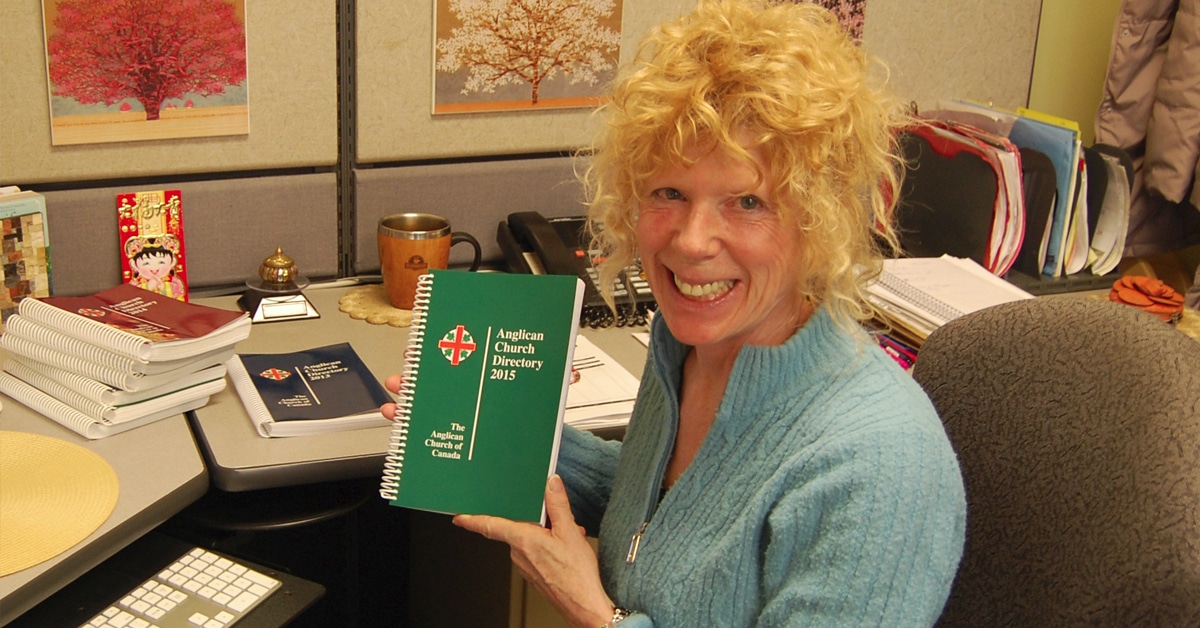For most church members, the release of the 2015 Anglican Church Directory means having an up-to-date source of information on dioceses, parishes and clergy across the country.
For those who produce the directory, however, its release marks the culmination of a long period of work—one characterized by a meticulous attention to detail.
The leading force in the production of the directory for more than a decade has been project editor Janet Thomas, who, among other work tasks, is responsible for collecting all the necessary information for every organization and entity listed in the book.
“It’s a big job, as you can imagine,” Thomas said.
“I’ve got it down to a fine art, though,” she added.
The production process begins each year in September, when Thomas begins approaching all the dioceses and organizations listed in the directory, working thereafter according to a series of specific deadlines.
“If I start asking people, say, around Labour Day, my goal is usually to have it to the printer before Christmas,” she said.
To collect the relevant data, Thomas relies on the help of diocesan contacts—primarily bishops’ executive assistants, who pass on the information for their dioceses, diocesan organizations and parishes—as well as in-house staff at General Synod. She also contacts church-sponsored organizations such as colleges and social agencies.
Meanwhile, Beverley Murphy, senior manager for communications and information resources at General Synod, is responsible for compiling the clergy index. A typesetter then handles the book’s formatting before handing the product to a printer.
The finished directory is usually available around mid-January, though the 2015 edition saw a minor delay due to the reorganization of the church following the creation of the Indigenous Spiritual Ministry of Mishamikoweesh.
“The dioceses that were affected, they had a lot more work to do…figuring out who’s who and what’s what,” Thomas said.
Save for a transition to colour advertisements, the directory itself has seen few radical changes in recent years.
The same cannot be said for the method of producing it.
“Because of technology, it’s much, much easier,” Thomas said. “The proofreading is easier, [as is] being able to send out electronic files [and] emails. Before, some of it was mailed out to people to update, and I used to receive information via fax, which was a nightmare because the ink didn’t show clearly.”
Though the technology may have changed, the Anglican Church Directory remains the most comprehensive resource on the Anglican Church of Canada, providing a wealth of valuable material for church members and non-members alike.
Like its predecessors, the latest edition of the directory includes information, personnel, websites, email addresses and telephone numbers for every Anglican diocese and parish in Canada, as well as partner organizations such as the Anglican Foundation and the Primate’s World Relief and Development Fund.
Besides the clergy index, other features include a diocesan map, information and statistics, a calendar of key dates, notes on how to address the clergy and a complete list of communities and municipalities served by the church along with their respective dioceses.
Interested in keeping up-to-date on news, opinion, events and resources from the Anglican Church of Canada? Sign up for our email alerts .

